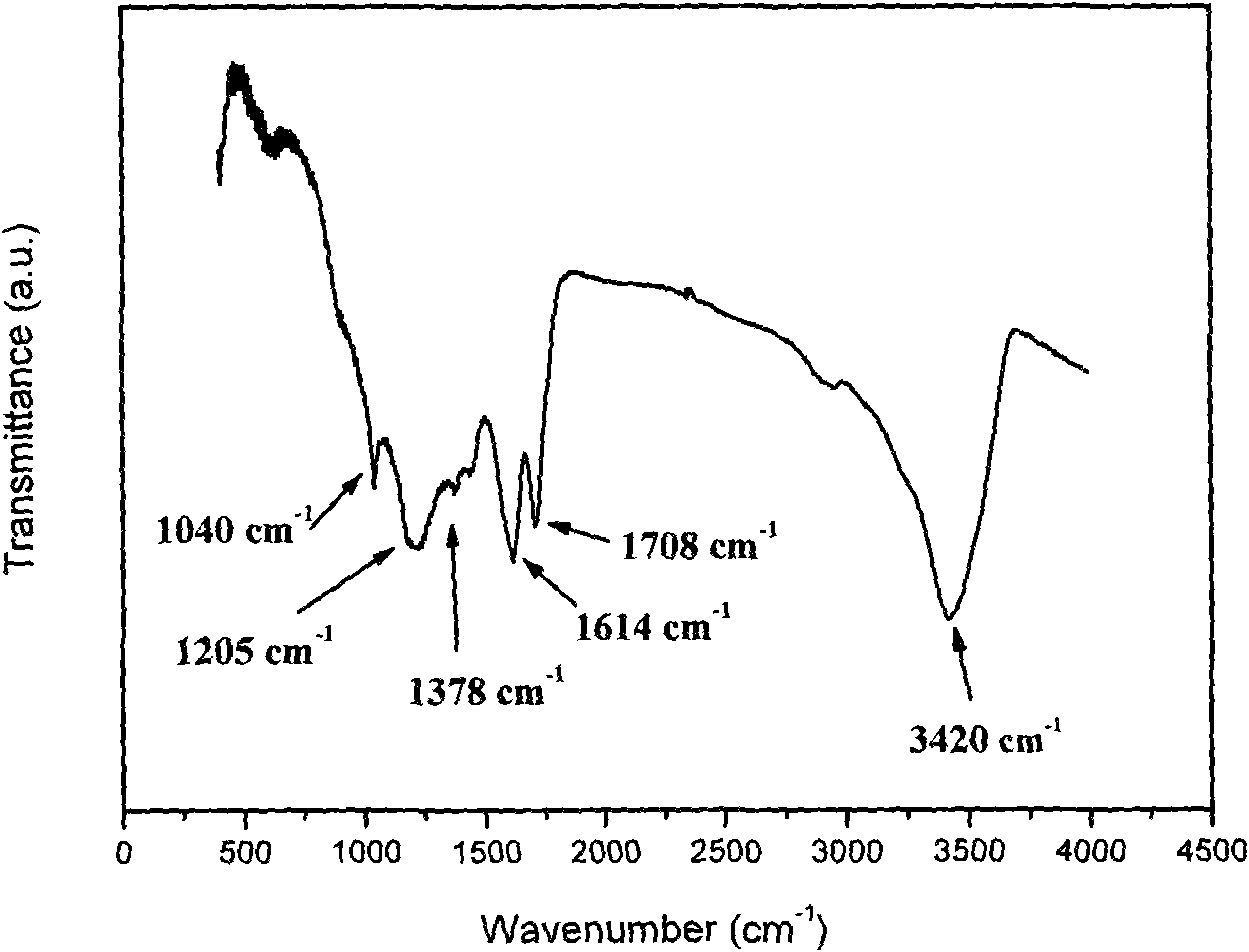Method for fast synthesizing mesoporous solid acid catalyst immobilized with sulfonic acid
A solid acid catalyst, a technology for carrying sulfonic acid, applied in chemical instruments and methods, organic compound/hydride/coordination complex catalysts, physical/chemical process catalysts, etc., can solve the obstacles to popularization and application, high production cost, Complex process and other problems, to achieve the effects of good reactivity, large immobilization capacity and simple separation
- Summary
- Abstract
- Description
- Claims
- Application Information
AI Technical Summary
Problems solved by technology
Method used
Image
Examples
Embodiment 1
[0017] Add 1.0g of SBA-15 mesoporous molecular sieve without removing template agent to 100ml sulfuric acid solution with 80% sulfuric acid mass fraction. Heat the sulfuric acid solution to 190℃, stir for 3h, cool to room temperature, filter with suction, and wash until the filtrate is Neutral, the obtained solid is dried at 100°C; each gram of solid is extracted with 200ml ethanol for 24h and dried at 100°C for 24h to obtain a mesoporous solid acid catalyst supported by sulfonic acid.
[0018] Catalytic effect: Add 0.20 g of catalyst, 20 ml of n-hexane as solvent, 100 mmol n-heptanal, 110 mmol ethylene glycol, reflux for 120 min in a three-necked flask, the conversion rate of n-heptanal is 92%, and the selectivity of product acetal is 98%.
Embodiment 2
[0020] Add 5.0 g of SBA-15 mesoporous molecular sieve without removing the template agent to 200 ml of sulfuric acid solution with 80% sulfuric acid mass fraction. The sulfuric acid solution is heated to 190°C, stirred for 3 hours, cooled to room temperature, filtered with suction, and washed until the filtrate is Neutral, the obtained solid is dried at 100°C; each gram of solid is extracted with 200ml ethanol for 48h and dried at 100°C for 36h to obtain a mesoporous solid acid catalyst supported by sulfonic acid.
[0021] Catalytic effect: Add 0.20 g of catalyst, 20 ml of n-hexane as solvent, 50 mmol n-heptanal, 55 mmol ethylene glycol, reflux for 120 min in a three-necked flask, the conversion rate of n-heptanal is 86%, and the selectivity of product acetal is 98%.
Embodiment 3
[0023] Add 10.0g of SBA-15 mesoporous molecular sieve without removing template agent to 500ml sulfuric acid solution with 90% sulfuric acid mass fraction. Heat the sulfuric acid solution to 195℃, stir for 4h, cool to room temperature, filter with suction, and wash until the filtrate is Neutral, the obtained solid is dried at 100°C; each gram of solid is extracted with 200ml ethanol for 48h and dried at 100°C for 24h to obtain a mesoporous solid acid catalyst supporting sulfonic acid.
[0024] Catalytic effect: Add 0.20 g of catalyst, 20 ml of n-hexane as solvent, 50 mmol n-heptanal, 55 mmol ethylene glycol, reflux for 120 min in a three-necked flask, the conversion rate of n-heptanal is 82%, and the selectivity of product acetal is 98%.
PUM
| Property | Measurement | Unit |
|---|---|---|
| quality score | aaaaa | aaaaa |
Abstract
Description
Claims
Application Information
 Login to View More
Login to View More - R&D
- Intellectual Property
- Life Sciences
- Materials
- Tech Scout
- Unparalleled Data Quality
- Higher Quality Content
- 60% Fewer Hallucinations
Browse by: Latest US Patents, China's latest patents, Technical Efficacy Thesaurus, Application Domain, Technology Topic, Popular Technical Reports.
© 2025 PatSnap. All rights reserved.Legal|Privacy policy|Modern Slavery Act Transparency Statement|Sitemap|About US| Contact US: help@patsnap.com



